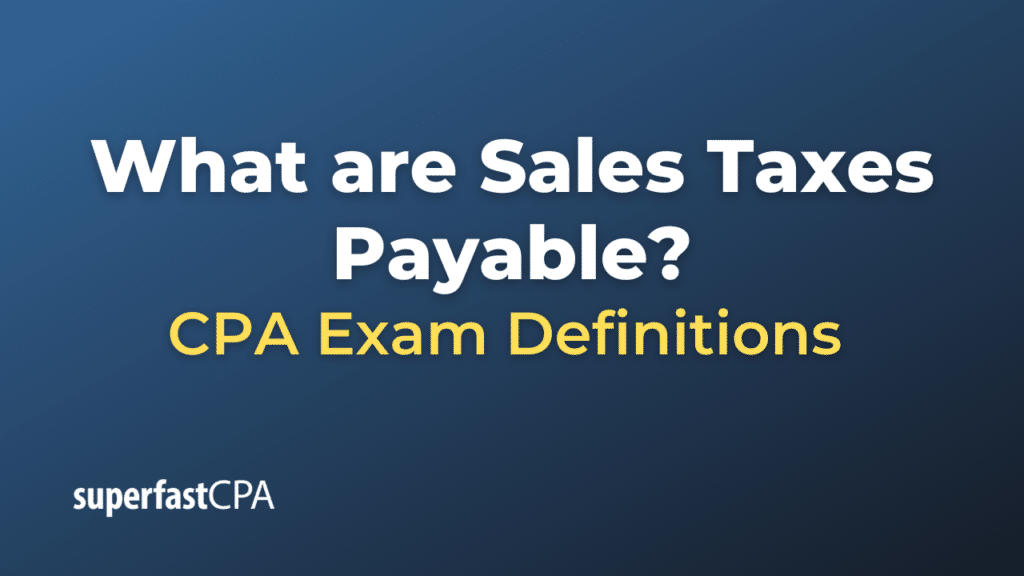Sales Taxes Payable
“Sales Taxes Payable” is a liability account on a business’s balance sheet that represents the amount of sales taxes that a business has collected from its customers but has not yet remitted to the appropriate governmental authority.
When a business sells goods or services that are subject to sales tax, it collects that tax from the customers on behalf of the government. This collected amount is not revenue for the business; instead, it is an amount the business owes to the government. Until the business remits this collected amount to the government, it recognizes the amount as a liability.
Here’s a breakdown of how “Sales Taxes Payable” works:
- Collection: When a sale occurs, and the business collects sales tax, it debits (increases) the cash or accounts receivable account and credits (increases) the sales revenue for the sales amount. Simultaneously, it credits (increases) the “Sales Taxes Payable” account for the amount of tax collected.
- Remittance: Periodically, the business will remit the collected sales taxes to the appropriate government agency. When this happens, the business will debit (decrease) the “Sales Taxes Payable” account and credit (decrease) its cash or bank account, thereby clearing the liability.
- Reporting: “Sales Taxes Payable” is reported on the balance sheet in the current liabilities section, as it’s typically a short-term obligation that will be settled within a year.
It’s crucial for businesses to manage and accurately report this liability to ensure compliance with tax regulations and avoid potential penalties or interest charges for late remittance.
Example of Sales Taxes Payable
Let’s walk through an example that demonstrates the collection and remittance of sales taxes and how they affect the “Sales Taxes Payable” account.
Imagine you own a bookstore named “Literary Haven” in a state where the sales tax rate is 6%. A customer buys books worth $200.
Transaction and Collection:
- Calculate the sales tax for the transaction:
Sales Tax Amount = $200 x 0.06 = $12 - The total amount the customer pays is:
Total Bill = $200 + $12 = $212 - The journal entries at the point of sale would be:
- Debit Cash: $212 (Total amount received, including sales tax)
- Credit Sales Revenue: $200 (Price of the books without tax)
- Credit Sales Taxes Payable (Liability account): $12 (Sales tax collected)
At this point, “Literary Haven” owes the government $12 in sales taxes. This is reflected in the “Sales Taxes Payable” account as a liability.
Remittance of Sales Tax: Assume that by the end of the month, “Literary Haven” has collected a total of $500 in sales taxes from various transactions. The bookstore now remits this amount to the state tax department.
The journal entries for this remittance would be:
- Debit Sales Taxes Payable (Liability account): $500 (Clearing the amount owed)
- Credit Cash: $500 (Reducing the bookstore’s cash by the amount sent to the government)
This example illustrates how the “Sales Taxes Payable” account functions. Initially, when sales tax is collected, the liability increases. Then, when the bookstore remits the accumulated sales taxes to the government, the liability is cleared.












